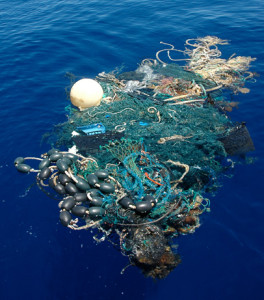Clean Up Your Next Trip to the Beach

What do a toothbrush, a fishing hook, a shovel, a piece of caution tape, a flip-flop, a water bottle and a tent have in common? Well, unless you plan on constructing some kind of contraption with random items, the answer is, “Things I’ve found on Folly Beach.” Weird right? Wrong. These items are commonly found on the edge of America and rarely given a second thought by beach-goers. Isn’t that sad? We live in a society where beach litter is so common that many people rarely give a second thought about it.
Lucky for us, South Carolina beaches aren’t plagued with as much litter as some other beaches states, especially Hawaii. Due to the islands’ close proximity to the Great Pacific Garbage Patch, large amounts of plastic and other waste wash onto the white sandy shores. On the more northern beaches, there is so much litter that the plastic has integrated itself into the sand, giving the beaches a multicolored look.
According to Ocean Conservancy, a non-profit organization that works to educate the public on the importance of healthy oceans, the most common items found on beaches are cigarettes and cigarette filters. Commonly people toss their cigarettes on the ground, assuming they will decompose because the outside is made of paper. In reality, the filter doesn’t decompose at the same rate as the rest of the product, leaving it to pollute the oceans. After cigarettes, the nine most common things found on beaches are as follows: food wrappers, plastic beverage bottles, plastic bags, bottle caps, cutlery, straws, glass beverage bottles, beverage cans and paper bags. These items are used around the world every day so it is no surprise that they can be found in mass amounts on sandy shores.
With this amount of waste washing onto beaches around the world, one can only imagine the volume of waste currently residing in waterways. While the Great Pacific Garbage Patch is one of the most well known issues involving ocean pollution, there are actually 5 gyres around the world, each collecting trash. In some places, the pieces of plastic outnumber the marine life. This debris causes a lot more problems than altering the appearance of your favorite beach. For marine life, coming into contact with debris can be a fatal experience. Not only does the pollution disrupt natural habitats, but also sea creatures can become entangled in debris such as fishing line and bottle rings, causing them to suffocate. Some marine life, such as sea turtles, face endangerment due to ingestion of these items. Sea turtles specifically will eat plastic bags, which they believe to be jellyfish – a fatal mistake. As more marine life ingests the debris, small amounts of plastic are increasingly found in seafood that we eat regularly, which poses a threat to human health.
Now this is all very depressing and sad and I’m sure you’re thinking, “Wow, there is so much trash in the ocean and I’m only one person. I can’t do anything.” WRONG. By spreading awareness about this issue and actively participating in clean up efforts, you can do a lot. The Ocean Conservancy hosts an annual International Coastal Cleanup where thousands of volunteers around the world participate in beach sweep in hopes of making a dent in the large amount of debris returning to the oceans. In 2014, 648,015 volunteers collected 12,329,332 pounds of trash over 12,914 miles of beaches. If picking up trash isn’t your favorite thing to do, you can pledge to stop using some of the most commonly found items including plastic water bottles, plastic grocery bags and straws. Small changes affect everything and those small changes start with us. So the next time you are taking a walk on Folly Beach and see a water bottle or straw, pick it up. Make sure to check out this link for 10 things you can do for trash free seas.
-Virginia Whorley
